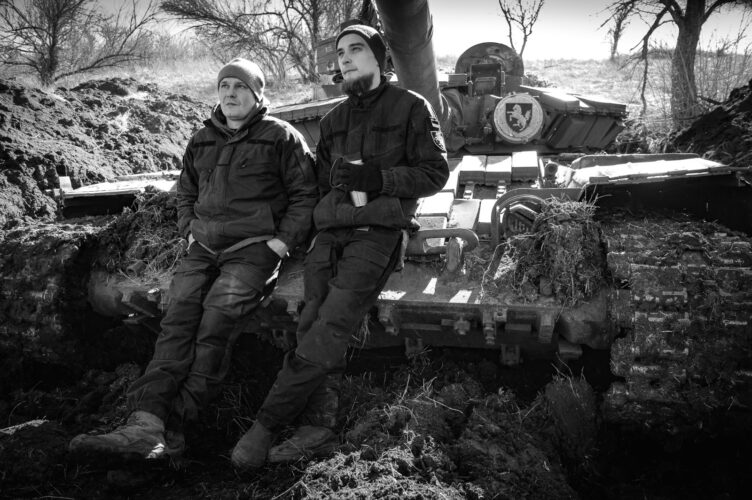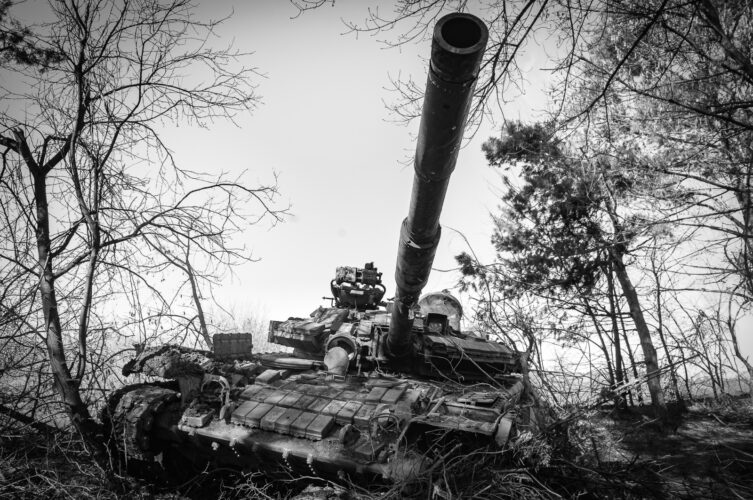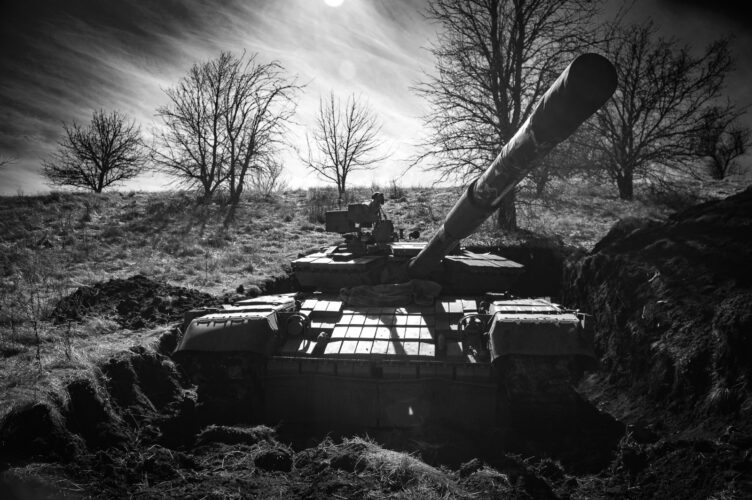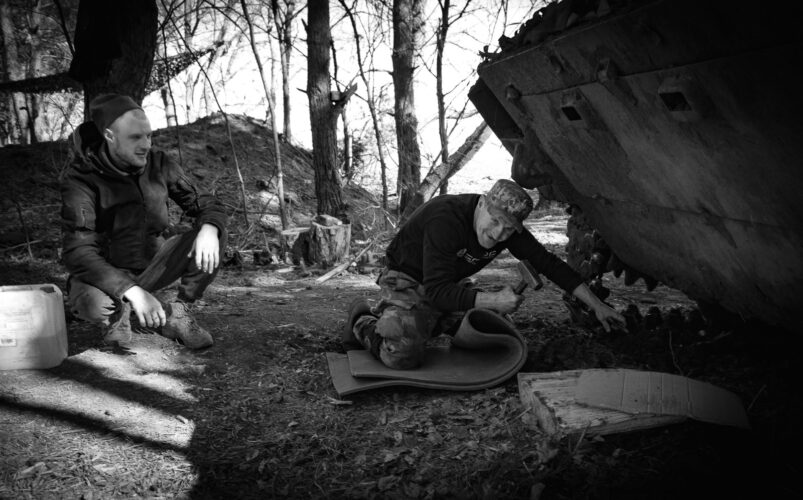THE HEROES OF CHERNIHIV – A photo essay by Paul Conroy
In war, legends are born, and reputations made, no more so than in the case of the First Tank Brigade. The Brigade battled to repel Russian forces who failed in their attempt to besiege Chernihiv, and later the Brigade went on to secure the highway to Kyiv and prevent the Russian advance on the capital. For these actions, they received the Courage and Bravery Award from President Zelensky, and their reputation was born. They are also highly elusive.
A Soviet-era T64BV of the First Tank Brigade. Donbas, Ukraine.
Zerina Zelinsky, a close friend and travelling companion in Donbas, had a fix on them and a half promise of access. We left Kramatorsk, a town close to Bakhmut and a target for long- range Russian rockets, at 4 am to rendezvous with her contact.
We travelled South for three hours to an undisclosed location close to the frontline. As we neared the eight-figure grid reference, we faced many checkpoints. When asked for our destination, we naturally said, “First Tank Brigade,” and received sceptical, ‘Do they exist’ looks in return.
At 7 am, we spotted a 4×4 that signalled us to follow. We weaved through a patchwork of villages and open fields for the next thirty minutes – not a tank in sight. When we finally stopped driving, the first thing that hit us was the low rumble of artillery barrages drifting across the rolling countryside. We were told to park under a tree by our contact, “Drones,” he warned us, looking to the sky, “they are everywhere.”

Dima and Vlad of the First Tank Brigade
Dima and Vlad (names changed) emerged from a dilapidated cottage typical of Donbas, looking slightly drowsy at the early wake-up call. They had been serving together since November 2022, and their closeness was apparent. They pulled on mud-caked boots and told us to put on full-body armour and helmets. We set off through the village and entered a wide- open plain offering zero protection.
The heavy tank tracks had churned up the fields, and the going was arduous in full kit. On route, our escorts pointed to dozens of shell holes pockmarking the ground. “Don’t worry,” they said casually, “they never shell us till the afternoon.”
After an hour of trudging through the mud, I spotted the first of the tanks, parked deep in a gun pit carved into the hillside and covered in camo netting. As we drew closer, I spotted two similarly disguised tanks.
Dima explained their setup. The platoon, made up of three tanks, were all Soviet-era T64BV, with an average age of 40-50 years, some as old as 70. As a result, maintenance is critical, and the tanks are fired up daily to keep them combat-ready. “We’ll do a circuit. It’s good for them,” said Vlad. “Really,” I thought, looking up at the sky, the drone warning running through my head.”

The T64BV is fired up as part of its daily maintenance.
They pulled back the camo nets and fired up one of the beasts. “That’s it,” I muttered, “even a half-blind drone couldn’t miss the huge puff of diesel and black smoke that belched from the ancient engine.” The thunder of artillery seemed even louder now, but they remained unperturbed.

A T64BV is being put through its paces.
For a fifty-year-old machine, the tank performed as if it had just rolled off the production line, smoothly hugging the terrain as it crested the peaks of the small hills and turning gracefully on the churned-up earth. Then, with remarkable skill and proficiency, they slid the tank back into its pit; moments later, it blended into the surrounding hills. Understandably, they could not discuss their plans. Still, given their record, I suspect they are laying low and waiting for the onset of the much-vaunted Ukrainian spring offensive.
A half-hour drive later, we were in a deep forest, and they had a surprise. Earlier that morning, they had disabled and captured a Russian T80 main battle tank, one of the few captured relatively intact in the whole war. “We’ll fix and use it,” said a beaming young mechanic in the forest maintenance area.
Everywhere, the carcasses of tanks sat in various states of destruction and repair. In small clearings, mechanics battled to get the machines ready for war. Still, the sense that they could, against all odds, beat Russia was palpable as they set about the seemingly impossible task of keeping these old machines battle ready.
Having seen the result of modern anti-tank weapons on these ageing machines, I felt intense respect for the young men, the Heroes Of Chernihiv, who would soon mount up and lead the counter-offensive charge, now only weeks away.

A captured Russian T80 main battle tank.

